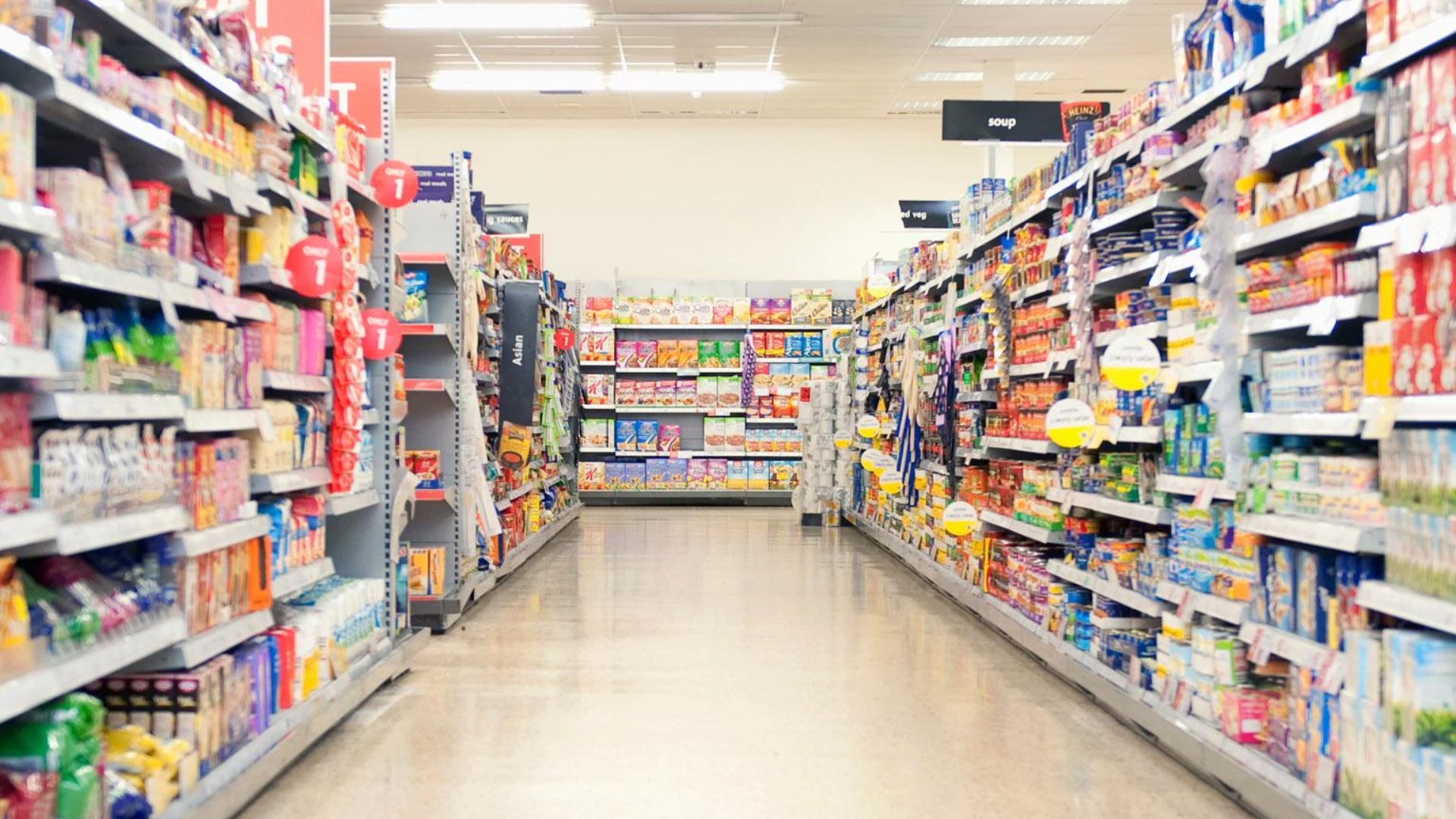The retail and consumer packaged goods (CPG) industry has become increasingly complex. With crowded store shelves, constant product launches, and ever-shifting promotions, CPG brands still struggle with gaps in on-shelf availability, poor share of shelf, and inconsistent promotional execution.
This is where predictive analytics makes a difference. By analysing past and present data, predictive analytics helps CPG brands identify retail execution gaps, anticipate challenges, and act proactively.
Brands that combine these models with accurate shelf data have seen up to 30% reductions in overstock and stockouts. This ensures products are available, positioned correctly, and consistently compliant in stores.
A quick snapshot:
- Proactive Retail Execution: Anticipates stockouts, planogram issues, and promotional gaps, enabling timely corrective actions.
- Improved Share-of-Shelf Management: Monitors product visibility against competitors and forecasts potential shelf-space declines.
- Enhanced Shelf and Promotion Compliance: Tracks product availability, planogram adherence, and promotions to improve in-store execution.
- Data-Driven Decision Making: Converts historical and real-time shelf data into clear insights for smarter decisions.
What is Retail Predictive Analytics for CPG Brands?
Predictive analytics for CPG brands refers to the use of statistical algorithms, AI, and machine learning models to forecast future outcomes based on existing data. For CPGs, this means turning shelf-level insights into practical strategies that improve availability, compliance, and execution.
Instead of reacting to stockouts or misplaced SKUs after they happen, predictive analytics lets brands anticipate issues before they occur. By pairing predictive models with real-time shelf visibility data, CPGs make faster, smarter choices that improve retail execution.
For example, McKinsey reports that brands applying predictive and pricing analytics can increase margins by 2–7%, showing the tangible impact of using data-driven in-store execution.
How Retail Predictive Analytics Works for CPG Brands?
Predictive analytics works by using historical and real-time data, applying algorithms, and generating forecasts that guide CPG teams in making timely retail execution decisions.
The process begins with data collection. For CPG brands, the most important data is what is happening at the shelf level:
- Are products in stock?
- Are they placed correctly according to the planogram?
- Is the promotional material visible and compliant?
- What is the share of shelf compared to competitors?
Once this data is captured, it is processed and structured for analysis. Predictive models then look for patterns and trends. For example, they might identify stores where certain SKUs frequently run low or where promotions are often under-implemented. By recognizing these trends, CPG teams can act before they affect sales.
Algorithms in predictive analytics include regression models that highlight relationships between shelf placement and sales impact. Classification models categorize stores by risk level. Time-series forecasting predicts stockout probabilities based on historical patterns.
What Are the Key Use Cases of Predictive Analytics in Retail?

Predictive analytics opens up several practical applications for CPG brands. Each of these use cases revolves around ensuring the product is on the shelf, in the right place, and visible to the customer.
1. Anticipating On-Shelf Stockouts
One of the most direct applications is predicting when a SKU may go out of stock on the shelf. This focuses on early detection at the store level, not inventory management.
For example, a beverage company could use predictive analytics to see that Store A is likely to run out of its new energy drink by Saturday due to a local event, enabling field teams to intervene in time and avoid lost sales.
2. Ensuring Planogram Compliance
Planograms dictate how products should be displayed in stores. Predictive analytics can forecast which stores are most likely to deviate from the planogram based on past compliance data.
For instance, a snack brand may find that smaller convenience stores consistently misplace new chip varieties. With predictive insights, field agents can prioritise visits to those high-risk stores, ensuring products are always displayed correctly and consistently.
3. Tracking Share of Shelf
A brand’s visibility depends heavily on its share of shelf space compared to competitors. Predictive analytics helps CPG teams anticipate shifts in shelf space before they become problematic.
For example, a cereal brand might detect that a competitor’s new granola line is gradually occupying more shelf space in a cluster of supermarkets. Teams can then act to restore their share, maintaining visibility where it matters most.
4. Promotion Compliance and Effectiveness
Promotions are costly, and ineffective execution reduces their impact. Predictive analytics flags stores where promotional materials or displays are at risk of being under-implemented.
For instance, a beverage brand running a limited-time summer promotion could predict that certain stores are likely to miss setting up displays on time. Field teams can then focus on those stores to ensure consistent promotional execution and maximise ROI.
Techniques Employed in Retail Predictive Analytics for CPG Brands

Predictive analytics is built on several analytical techniques, each playing a role in forecasting outcomes from shelf data. Some commonly used techniques include:
- Regression Analysis: Regression models help CPG teams understand relationships between shelf conditions and outcomes like stockouts or share-of-shelf changes. By analysing past shelf data, regression predicts which SKUs might fall below planogram standards, so that teams can act early.
- Classification Models: Classification techniques group stores by risk levels. Stores are flagged as high, medium, or low risk for stockouts, promotional lapses, or planogram deviations, helping field teams focus on stores where action matters most.
- Clustering: Clustering identifies groups of stores with similar shelf performance patterns. Recognising clusters with recurring planogram issues or low shelf share allows sales and trade marketing teams to design targeted fixes rather than applying the same strategy everywhere.
- Time-Series Forecasting: Time-series models use historical shelf data to predict trends in product availability and promotional compliance. This helps CPG brands spot recurring execution challenges, like seasonal dips in planogram adherence or product visibility.
- Anomaly Detection: Anomaly detection finds unusual deviations from expected shelf conditions. For example, if a normally compliant store suddenly shows gaps in product placement or promotions, predictive analytics flags it immediately for review.
- Machine Learning Algorithms: Advanced machine learning models learn continuously from incoming shelf data to improve forecast accuracy. Over time, these models detect subtle patterns, like gradual loss of shelf share or recurring promotional gaps, and alert teams to take action.
By combining these methods, predictive analytics enables CPG teams to move from reactive monitoring to proactive retail execution.
What Are Benefits of Predictive Analytics in Retail?
The benefits of predictive analytics for CPGs are tied directly to their ability to execute retail execution effectively.
- Reduced Execution Gaps: Predictive analytics forecasts where stockouts, planogram deviations, or promotion lapses may occur, allowing teams to fix issues early.
- Risk Mitigation for New Product Launches: By analyzing similar SKU launches, predictive models highlight possible challenges, helping brands introduce new products smoothly.
- Efficient Resource Allocation: Insights from predictive analytics let CPG brands deploy field teams strategically, covering more stores with less effort.
- Better Promotional ROI: By anticipating compliance risks, predictive analytics ensures promotional budgets are not wasted on under-executed campaigns.
- Data-Driven Decision Making: Perhaps most importantly, predictive analytics empowers CPG brands to make smarter decisions based on actual shelf data instead of guesses.
Advanced Strategies in Retail Predictive Analytics for CPG Brands
CPG brands are increasingly adopting advanced strategies to make predictive analytics more accurate and useful. These strategies make forecasts actionable and aligned with what’s actually on the shelves.
- Real-Time Shelf Data Integration: Combining predictive models with live shelf insights helps forecasts reflect current in-store conditions. Teams can respond to changes immediately and keep shelves stocked consistently.
- Scenario-Based Planning: Brands can simulate “what-if” scenarios using predictive insights. For example, they can forecast how a promotion or new product launch might affect shelf share. This helps teams plan ahead and prevent issues.
- Integration with Planogram Compliance Insights: Predictive analytics works best with real-time compliance data. This integration helps teams spot deviations, take quick action, and keep shelf standards consistent.
- Targeted Promotional Forecasting: By analysing past promotion compliance and on-shelf trends, predictive analytics shows where promotions might underperform. Teams can adjust execution strategies in advance for the best results.
- Continuous Model Training: Modern predictive analytics strategies involve constantly updating models with fresh shelf images, ensuring forecasts adapt to changing retail environments.
These advanced strategies help CPGs move from static forecasting to dynamic, always-on execution planning.
How ParallelDots Can Improve Retail Predictive Analytics for CPG Brands?
Accurate predictions depend on accurate data. ParallelDots ensures your predictive models have the best shelf-level data to work with, in several ways:
1. Real-Time Shelf Visibility
ParallelDots’ ShelfWatch continuously monitors shelves across thousands of stores, capturing on-shelf stock levels, planogram compliance, and share-of-shelf data. This live data ensures predictive models are based on the most current information, reducing the risk of inaccurate forecasts and enabling proactive decision-making.
2. Actionable Insights for Field Teams
By integrating shelf-level data into predictive analytics, field agents and sales leaders can prioritise high-risk stores and focus their efforts where they matter most. This targeted approach maximises coverage, improves planogram compliance, and helps ensure promotional displays are implemented correctly across outlets.
3. Enhanced Promotional Forecasting
Predictive analytics combined with ShelfWatch data allows CPG brands to anticipate potential promotion execution gaps. Teams can identify which stores are at risk of non-compliance and take corrective action early, ensuring promotions drive the intended impact without wasted spend.
4. Accurate Share-of-Shelf Tracking
ParallelDots enables CPG brands to monitor how much shelf space their products occupy relative to competitors. Predictive models can then forecast potential share-of-shelf declines, allowing category managers to intervene and optimize shelf placement for maximum visibility and sales potential.
5. Actionable, Data-Driven Decisions
ParallelDots turns raw shelf data into clear, actionable insights. Providing accurate, real-time information on stock, planogram compliance, and promotions enables proactive decision-making. This reduces guesswork and ensures consistent in-store performance. Teams can allocate resources efficiently while maintaining strong brand visibility.
By integrating ParallelDots into retail operations, CPG brands can gain a clear view of in-store execution, enabling faster, smarter, and more informed decisions. Request a demo to see how ParallelDots can transform your retail execution strategy.
Frequently Asked Questions
1. What data sources are essential for predictive analytics in CPGs?
CPG brands rely on retail shelf data, planogram compliance records, promotional execution reports, and on-shelf stock visibility metrics. These sources provide actionable insights into how products are performing in stores, enabling brands to identify gaps in shelf execution and make informed decisions about restocking, product placement, and promotional compliance.
2. How do CPG brands use predictive analytics to improve trade promotion ROI?
By analysing on-shelf product visibility, share of shelf, and promotional compliance data, CPG brands can identify which stores or products underperform during campaigns. Predictive analytics helps prioritise store interventions, optimise promotional execution, and ensure planned offers are correctly implemented, ultimately increasing the effectiveness and ROI of trade promotions.
3. How does predictive analytics support new product launches for CPG brands?
Predictive analytics allows brands to monitor in-store placement, SKU visibility, and planogram compliance for new products immediately after launch. By tracking where new SKUs appear and whether they are correctly positioned, brands can make rapid adjustments, ensuring consistent visibility across stores and reducing execution gaps that could affect product adoption.
4. What business outcomes can CPG brands expect from predictive analytics adoption?
CPG brands gain accurate, real-time shelf visibility, improved planogram compliance, and better share of shelf performance. This leads to more consistent in-store execution, fewer stockouts at the shelf level, effective promotion rollouts, and actionable insights that help field teams intervene quickly, ultimately strengthening brand presence and market performance.


